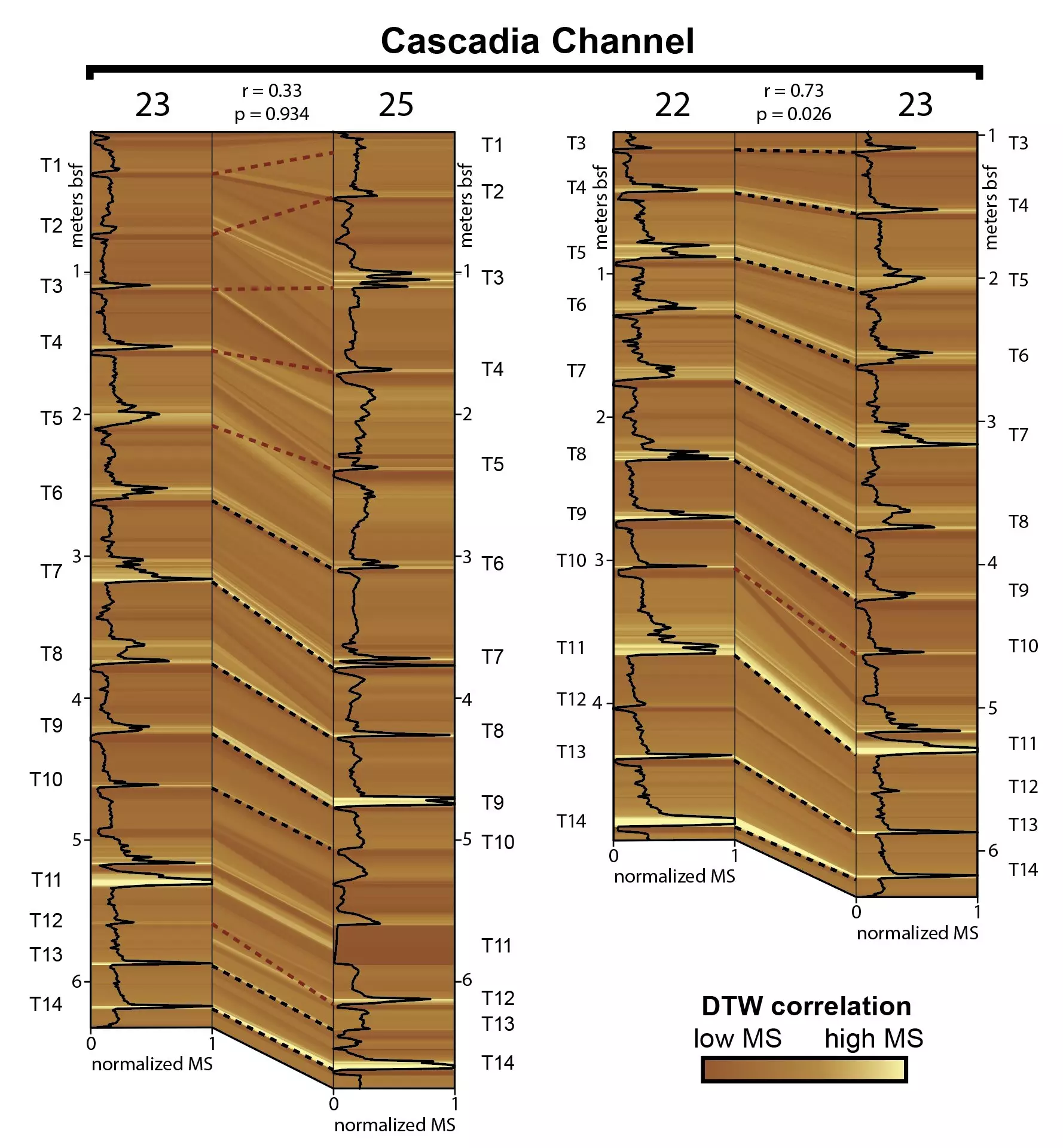The Cascadia subduction zone (CSZ), navigating the Pacific Northwest’s geological landscape, has a long-standing reputation for generating formidable earthquakes with far-reaching consequences. These seismic events have not only devastated local ecosystems by submerging vast forest areas but have even produced tsunamis that have traveled across the Pacific Ocean, impacting shores as far as Japan. A notable historical occurrence took place in 1700, marking a significant moment in the geological timeline; however, scientists caution that this episode may serve as a mere precursor, with the possibility of more destructive earthquakes lurking on the horizon.
As urban development progresses and major cities thrive in this historically dangerous region, understanding the frequency and timing of tsunamigenic earthquakes has become increasingly critical. Geological assessments, which focus on the signs left behind in rock formations, sediments, and the overall shape of the landscape, help forecast when the next seismic event may strike. Nevertheless, recent inquiries led by researchers from The University of Texas at Austin cast doubts on the reliability of some geological records used in these assessments.
At the heart of the researchers’ unsettling findings lies the evaluation of turbidite layers in seafloor sediment deposits. Turbidites, formed through underwater landslides, have always been thought to provide key evidence of past earthquake activity. Recent studies sought to correlate these layers with historical earthquakes by examining samples extending back approximately 12,000 years. However, the researchers employed a novel algorithm to assess the interconnections of these layers, with disconcerting results. The correlation between turbidite layers was often no more indicative than random chance.
The study’s lead author, Joan Gomberg, a research geophysicist with the U.S. Geological Survey, emphasized the need for a reevaluation of the narratives surrounding earthquake timelines sourced from these geological records. Despite the unease surrounding turbidite correlations, scientists continue to argue that Cascadia has a history of seismic activity and that residents must remain vigilant and prepared for future events.
While the frequency of significant earthquakes in the CSZ is still estimated at intervals of around 500 years, this estimation stems from various data sources and not solely from the turbidite layers scrutinized in this study. The implications of these fresh findings highlight a pressing need for ongoing research, especially in relation to how individual turbidite records can convey a clearer picture of past seismic activities. Co-author Jacob Covault also pointed to the algorithm utilized in this research as a potentially groundbreaking tool. Its reproducible nature brings a level of objectivity to a field often reliant on subjective human interpretations.
Rather than focusing solely on qualitative observations of geological structures, this new method lays a foundation for advancing the quantitative analysis of ancient earthquake records. By encouraging replicability, scientists from different disciplines can converge on a shared basis for understanding geological formations and interpreting their relevance.
Turbidites are characterized by their distinct layering of sediment, typically featuring coarser grains at the base and finer particles on top. Various natural phenomena—earthquakes, storms, and floods—can instigate their formation, complicating the task of linking turbidites directly to tectonic activity. This ambiguity necessitates meticulous examination of geologic cores taken from the seafloor in order to identify layers believed to be remnants of past earthquakes.
To enhance understanding of these comparisons, the research team utilized the algorithm termed “dynamic time warping,” a powerful statistical tool initially developed for sound recognition. By adapting this algorithm to the field of geosciences, the researchers aimed to streamline the process of correlating turbidite layers. They verified their findings against synthetic data and conducted rigorous checks, revealing that many previously assumed correlations were mere coincidences.
Moving Forward: The Need for Continued Research
The study raises crucial questions regarding how scientists articulate and affirm connections between geological samples. As noted co-author Zoltán Sylvester pointed out, it is essential to accentuate that while the algorithm serves as an innovative method for interpreting geological records, it should not be the sole measuring stick. The complexity of turbidite formation introduces variability that may significantly influence how researchers interpret past seismic events.
While breakthroughs in methodological approaches are commendable, it is clear that the geological community must carefully integrate a variety of data sources in order to paint a comprehensive picture of seismic history in the Cascadia region. As research evolves, it is imperative that scientists maintain a dialogue about their methodologies and results in order to equip society with the most accurate predictions of seismic behavior. Ultimately, an informed public is vital for preparedness in a place where the memory of geological upheaval is written in the very fabric of the earth.


Leave a Reply